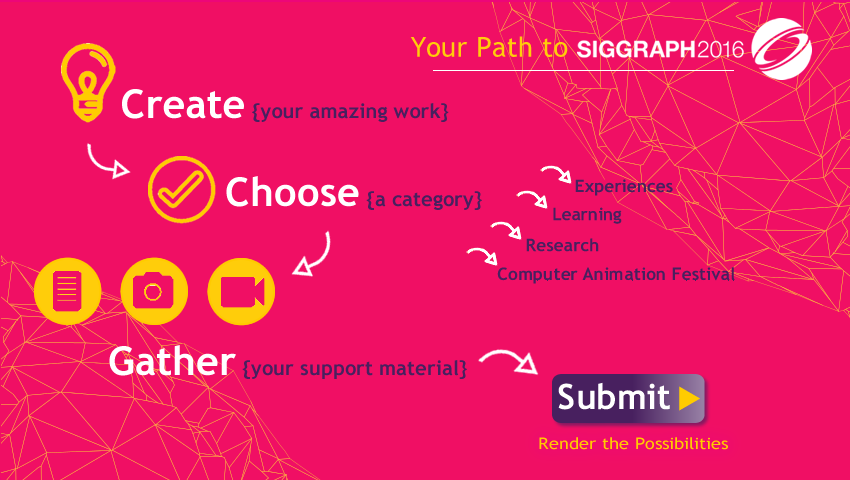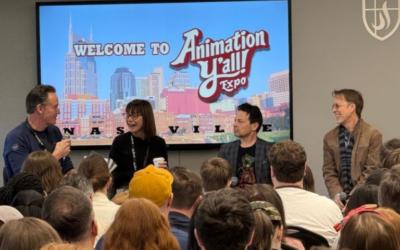SIGGRAPH has always celebrated the synergy of art, science, and technology through a passion for graphics, interactivity, enhanced realities, games, mobile, robotics, visualization, and any other area where creative convergences occur. For more than 40 years, our conference has nurtured collaboration and connections, and has served as a hub, bringing together scholars, creative practitioners, and industry professionals who continue to inspire, educate, and exemplify innovative approaches.
The content that is contributed to our educational programs and exhibitions is the foundation of why we gather every year. SIGGRAPH 2016 (24-28 July 2016 in Anaheim, CA) will continue this legacy as we render new possibilities in scholarship and practices that integrate, immerse, and aspire to make a positive contribution to the world around us.
This year, we offer a variety of opportunities for contributors to present and be an integral part of the upcoming conference. As always, submissions are reviewed and evaluated by a highly experienced and qualified jury comprised of top scholars and practitioners from a plethora of specializations.
But this year, we’ve made it easier than ever to submit your work and find the program that is right for you. We’ve clustered our programs around four major categories: Research, Learning, Experiences, and Computer Animation Festival. Programs are grouped within these categories.
The submission process breaks down to four simple steps:
1. Create. That’s the best part. It’s what you do every day. If you have research, an application, an installation, artwork, immersive experience, or any other innovation within the field of computer graphics and interactive techniques that you want to share, you should be submitting it to SIGGRAPH 2016.
2. Choose. Think about your work as it applies to our four major categories. Then, drill down within those categories to find the program that is the best fit for what you’ve created.
3. Gather. Once you decide on a program, drill down within the submission guidelines to discover what kind of supporting materials are required. Prior to submitting, you’ll want to make sure that you have what you need. Most programs provide examples of successful submissions and ACM SIGGRAPH has preferred formatting guidelines and templates available to make the process easier.
4. Submit. If you haven’t already, create an account within the SIGGRAPH Information System (SIS), where you can submit your work and supporting documentation.
Important! Please be mindful of the deadlines. SIGGRAPH deadlines are firm this year, and we do not want to miss your submission.
SIGGRAPH 2016 will celebrate the transformational capabilities that arise when systems, ideas, and techniques intertwingle. We hope you’ll be part of it!



